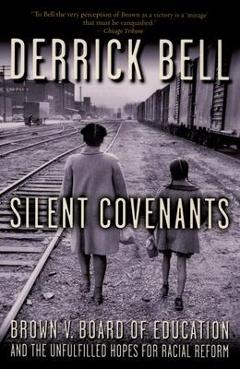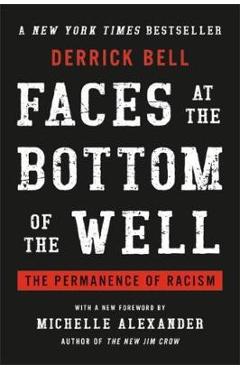Silent Covenants: Brown V. Board of Education and the Unfulfilled Hopes for Racial Reform - Derrick Bell

Detalii Silent Covenants: Brown V. Board
Silent Covenants: Brown V. Board - Disponibil la libris.ro
Pe YEO găsești Silent Covenants: Brown V. Board de la Derrick Bell, în categoria Law.
Indiferent de nevoile tale, Silent Covenants: Brown V. Board of Education and the Unfulfilled Hopes for Racial Reform - Derrick Bell din categoria Law îți poate aduce un echilibru perfect între calitate și preț, cu avantaje practice și moderne.
Preț: 211.95 Lei
Caracteristicile produsului Silent Covenants: Brown V. Board
Comandă Silent Covenants: Brown V. Board Online, Simplu și Rapid
Prin intermediul platformei YEO, poți comanda Silent Covenants: Brown V. Board de la libris.ro rapid și în siguranță. Bucură-te de o experiență de cumpărături online optimizată și descoperă cele mai bune oferte actualizate constant.
Descriere magazin:
When the landmark Supreme Court case of Brown vs. Board of Education was handed down in 1954, many civil rights advocates believed that the decision, which declared public school segregation unconstitutional, would become the Holy Grail of racial justice. Fifty years later, despite its legal irrelevance and the racially separate and educationally ineffective state of public schooling for most black children, Brown is still viewed by many as the perfect precedent. Here, Derrick Bell shatters the shining image of this celebrated ruling. He notes that, despite the onerous burdens of segregation, many black schools functioned well and racial bigotry had not rendered blacks a damaged race. He maintains that, given what we now know about the pervasive nature of racism, the Court should have determined instead to rigorously enforce the equal component of the separate but equal standard. Racial policy, Bell maintains, is made through silent covenants--unspoken convergences of interest and involuntary sacrifices of rights--that ensure that policies conform to priorities set by policy-makers. Blacks and whites are the fortuitous winners or losers in these unspoken agreements. The experience with Brown , Bell urges, should teach us that meaningful progress in the quest for racial justice requires more than the assertion of harms. Strategies must recognize and utilize the interest-convergence factors that strongly influence racial policy decisions. In Silent Covenants , Bell condenses more than four decades of thought and action into a powerful and eye-opening book.

Produse asemănătoare
Produse marca Derrick Bell

Silent Covenants: Brown V. Board of Education and the Unfulfilled Hopes for Racial Reform - Derrick Bell
![]() libris.ro
libris.ro
Actualizat in 05/06/2025
211.95 Lei
